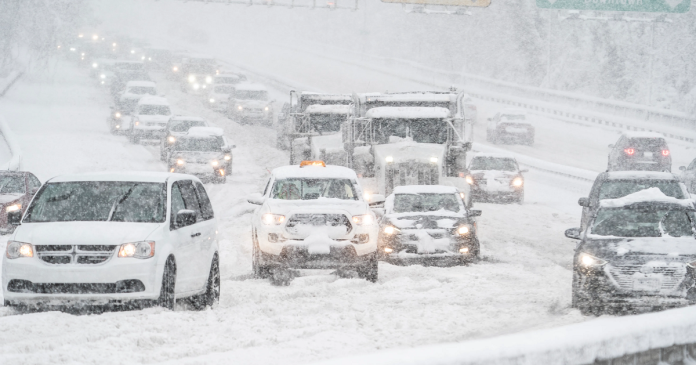The winter of 2024-2025 across Canada is shaping up to be harsh, according to the latest predictions from the Farmer’s Almanac. This well-known publication anticipates a winter characterized by alternating precipitation and significant snowfall, largely due to the influence of the La Niña climate phenomenon. This natural event, which cools the waters of the tropical Pacific Ocean, disrupts weather patterns worldwide and is expected to bring below-average temperatures to several regions of Canada, particularly from the eastern Rockies to Ontario.
Canadians should brace for particularly intense cold spells, especially in the Prairies and around the Great Lakes, where temperatures are expected to plummet dramatically from late January to early February. In contrast, Quebec and the Maritimes may experience slightly milder temperatures than usual, though these regions will not escape the heavy precipitation forecasted throughout the season. A major winter storm is anticipated in mid-February, likely bringing significant snowfall to the province.
The winter also promises to be wet for British Columbia and eastern Canada, where residents will have to contend with a mix of rain, snow, and sleet. Newfoundland and Labrador are expected to face particularly rainy conditions. Ontario is likely to see a mixed winter with alternating snow and rain, while the Prairies could experience a true “white winter.”
As for the Farmer’s Almanac’s forecasting method, it relies on an ancient formula developed over two centuries ago. Despite its imperfections, this method is believed by its followers to be 80 to 85% accurate, based on the study of sunspots, lunar cycles, and historical weather patterns. Although the predictions are made two years in advance without any updates, they continue to generate significant interest, providing Canadians with valuable insights into what to expect for the upcoming winter.
Of course, more traditional methods of predicting winter remain, such as observing the height of beehives—a long-standing folk belief dating back centuries. According to this tradition, the higher the hives are built, the harsher the winter will be. While this has no scientific basis, it reflects humanity’s enduring quest to forecast nature’s whims.
Read more :














